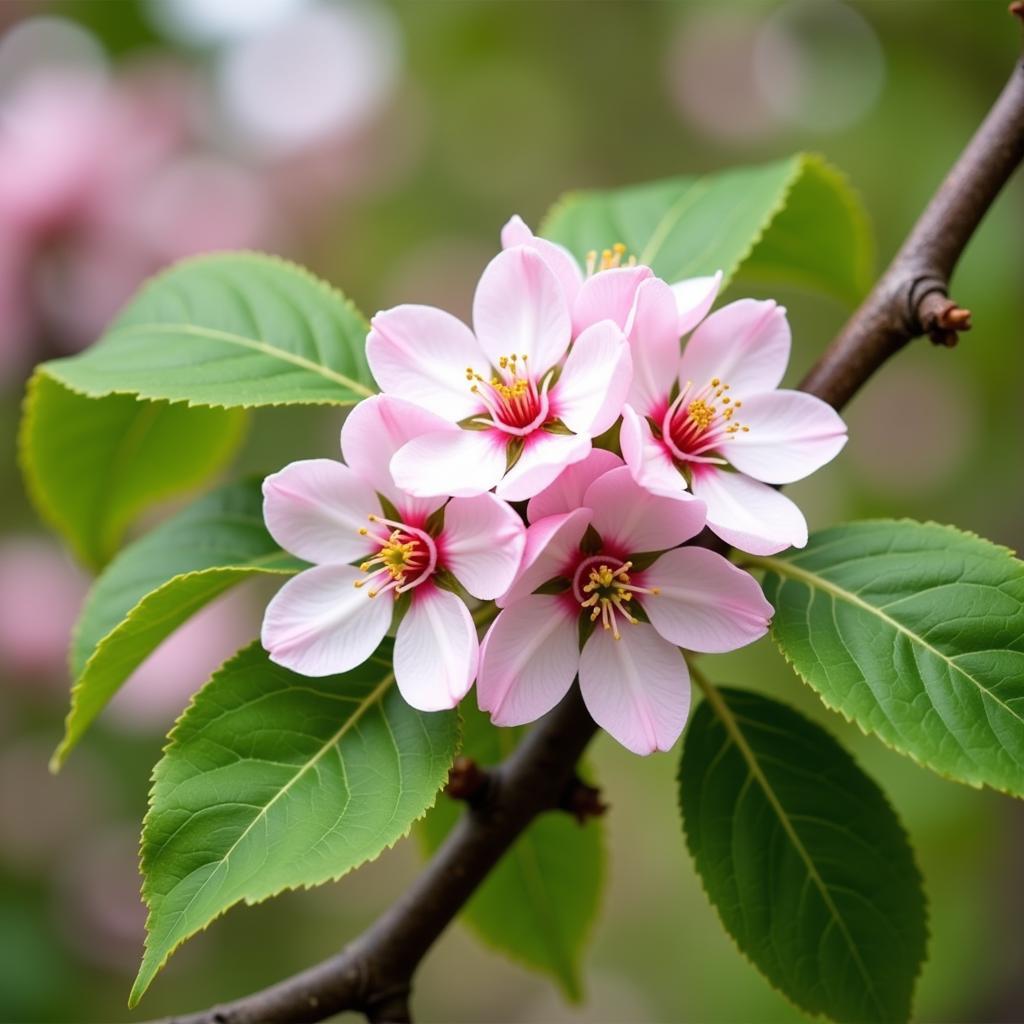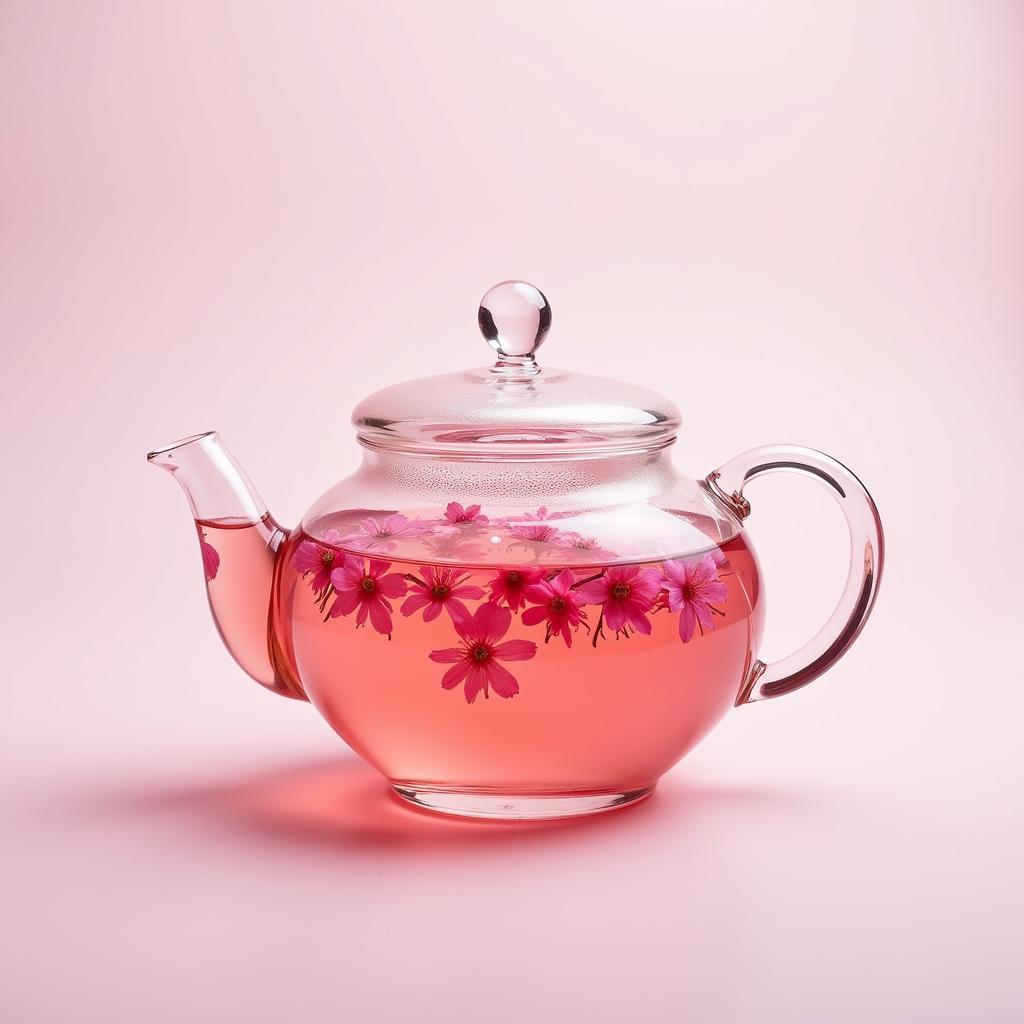How to Make Sakura Tea: A Step-by-Step Guide
October 10, 2024Sakura tea, with its delicate floral aroma and stunning visual appeal, offers a unique sensory experience. This guide provides a comprehensive look at how to make this exquisite beverage, exploring everything from selecting the perfect blossoms to the nuances of brewing.
Understanding Sakura Tea
Before delving into the brewing process, it’s helpful to understand what sakura tea is and its cultural significance in Japan. Sakura, or cherry blossoms, hold a special place in Japanese culture, symbolizing beauty, renewal, and the fleeting nature of life. Sakura tea embodies these sentiments, providing a taste of spring with every sip.
 Sakura blossoms on a branch
Sakura blossoms on a branch
Choosing the Right Ingredients
The key to a flavorful and visually appealing cup of sakura tea lies in selecting high-quality ingredients:
- Sakura Blossoms: Opt for edible, salt-preserved sakura blossoms. These are readily available online and at specialty Asian grocery stores. Avoid using decorative sakura blossoms, as these may be treated with chemicals unsuitable for consumption.
- Water: Use filtered water to ensure any impurities don’t interfere with the delicate flavor of the tea.
Step-by-Step Brewing Guide
Follow these steps to brew the perfect cup of sakura tea:
- Rinse the Blossoms: Gently rinse the salt-preserved sakura blossoms under cold running water to remove excess salt. This step helps to mellow the saltiness and bring out the delicate floral notes.
- Prepare the Cup: Warm your teacup with hot water to prevent the tea from cooling down too quickly.
- Steep the Blossom: Place one or two sakura blossoms at the bottom of the warmed teacup.
- Pour Hot Water: Carefully pour hot water (around 80°C or 175°F) over the blossom. Avoid using boiling water, as this can damage the delicate petals and result in a bitter flavor.
- Steeping Time: Allow the tea to steep for 2-3 minutes or until the desired strength is achieved. The blossoms will gradually unfurl, releasing their delicate flavor and aroma.
- Enjoy: Once steeped, savor the unique flavor and aroma of your sakura tea. You can enjoy it hot or chilled, depending on your preference.
Variations and Serving Suggestions
- Add Sweetness: While sakura tea is traditionally enjoyed unsweetened, you can add a touch of honey or sugar to suit your taste.
- Combine with Other Teas: For a unique flavor profile, blend sakura blossoms with green tea, white tea, or herbal teas like chamomile.
- Cold Brew Option: For a refreshing summer drink, try cold-brewing sakura tea. Simply steep the blossoms in cold water for several hours or overnight in the refrigerator.
 Sakura tea in a glass teapot with blossoms
Sakura tea in a glass teapot with blossoms
Tips for the Best Sakura Tea
- Storage: Store unopened sakura blossoms in a cool, dark place. Once opened, store them in an airtight container in the refrigerator to maintain freshness.
- Experiment: Don’t be afraid to experiment with different steeping times and water temperatures to find your preferred flavor profile.
- Presentation: Enhance your tea-drinking experience by serving sakura tea in clear glass teacups to appreciate the blossoms’ beauty.
Conclusion
Brewing sakura tea is a simple yet rewarding process that allows you to experience the essence of Japanese culture. By following these steps, you can create a visually stunning and deliciously aromatic beverage that delights the senses. So, why not embark on a sensory journey and treat yourself to a cup of this exquisite tea?
FAQ
- Where can I find edible sakura blossoms? Edible sakura blossoms are available online and at specialized Asian grocery stores.
- Can I reuse the blossoms after steeping? While you can technically reuse the blossoms, they will lose their flavor and vibrancy with subsequent steeping.
- Does sakura tea contain caffeine? Sakura blossoms themselves are caffeine-free. However, if you’re blending them with other teas like green tea, the final beverage will contain caffeine.
Common Questions:
Q: What does sakura tea taste like?
Sakura tea boasts a delicate, slightly floral, and subtly sweet flavor profile. Some even detect a hint of tartness. Due to the salt-preservation process, a slight saltiness adds complexity to the taste.
Q: What are the health benefits of sakura tea?
While not a cure-all, sakura tea is believed to offer antioxidant properties. It is also a source of antioxidants, which may contribute to overall well-being.
Explore More:
For more insights into Japanese culinary delights and cultural experiences, check out these articles:
- [Link to another article on your website]
- [Link to another article on your website]
Need Help?
We’re here to assist you! Contact us at:
Phone Number: 0915117113
Email: [email protected]
Address: To 3 Kp Binh An, Phu Thuong, Viet Nam, Binh Phuoc 830000, Viet Nam
Our dedicated customer service team is available 24/7 to address your queries and provide support.